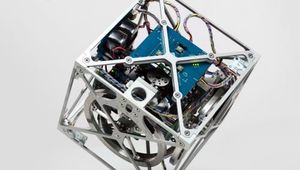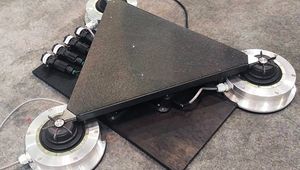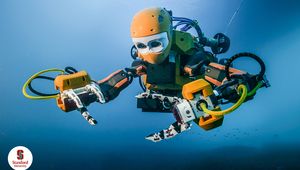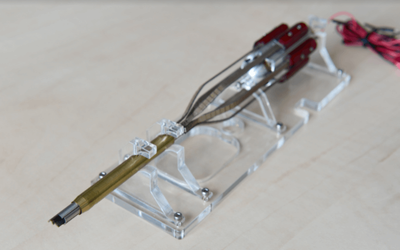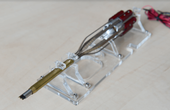HistoEnder: a 3D printer-based histological slide autostainer that retains 3D printer functions
A histological slide autostainer made from a modified cheap open-source 3D printer
Technical Specifications
| HISTOENDER | |
| PETG used | ~450 grams |
| Jar holder cutouts | 46.4 x 102.5 x 100 mm |
| Space between cutouts | 6.0 mm |
| Staining jar size | 45.6 x 101.3 x 93.4 mm |
| Clamp Holder | material: neodymium magnet |
| size: 10 x 10 x 10 mm | |
| Raise position | Z=210 mm |
| Dip position | Z=130 mm |
| CREALITY ENDER 3 | |
| Machine Size | 44 x 41 x 46.5 cm |
| Technology | Fused Deposition Modeling (FDM) |
| Print Area | 220 x 220 x 250mm |
| Nozzle size | 0.4mm |
| Suggested Material | PLA, ABS, TPU |
| Filament Diameter | 1.75mm |
| Maximum Print Speed | 180mm/s |
| Maximum Layer Resolution | 0.1mm |
| Printing Accuracy | +/-0.1mm |
| Maximum Nozzle Temperature | 255°C |
| Heated Bed | Yes |
| Maximum Hotbed Temperature | 110°C |
| Connectivity | SD Card, USB |
| LCD Screen | Yes |
| File Format | STL, OBJ, G-Code |
| Input | AC 100-265V 50-60Hz |
| Output | DC 24V 15A 270W |
Overview
This tech spec was submitted by Marco Ponzetti as part of the University Technology Exposure Program.
Overview
The HistoEnder is a fully programmable Cartesian FDM 3D printer that moves a slide rack loaded with microscope slides through different solvent/staining jars in a specific sequence and with precise temporization. As a result, the machine is highly versatile and capable of automatically performing various cell or tissue staining procedures. Due to the precise homing mechanism of the 3D printer, HistoEnder can be used immediately with minimal run-to-run adjustment after an initial setup and dry run test. In addition, the 3D printer also retains complete printing capabilities by uninstalling the additional 3D printed pieces in less than a minute.
Problem / Solution
HistoEnder is a project to automate microscope slide staining procedures at a low cost by modifying an open-source 3D printer, the Creality Ender-3. The HistoEnder will make automatic staining accessible even to low-budget laboratories.
Small to medium-sized histology & pathology laboratories worldwide waste hours of labor by manually performing staining procedures that could be easily automated. This is due to the unavailability of a cheap and easy-to-use machine for automatic slide staining and the impracticality of obtaining an expensive automated staining machine for non-intensive histology work.
The HistoEnder is an automated microscope slide autostainer created by modifying a Creality Ender-3 open-source 3D printer. It can simultaneously stain up to 23 slides. The HistoEnder is inexpensive, modular, and simple to assemble, requiring only two 3D-printed parts. The machine's g-code is relatively simple to write and can be done by anyone. Furthermore, a web application is currently under development to automate this process.
Design
The HistoEnder is composed of 3D-printed and store-bought components. The 3D-printed parts are the jar holder, headpiece, and jar tabs, while the store-bought components are the Creality Ender-3 open-source 3D printer, jars for histology, and slide holder.
The only modification to the 3D printer is the addition of two new components: a jar holder for holding the 8 staining jars on the printer bed, and a headpiece for mounting the up to 23 slide holder on the printhead. Both jar holder and headpiece are designed to accommodate the most common jar sizes and slide racks available on the market. A 3D-printed alignment guide is recommended for correctly aligning the jar holder. All 3D-printed parts can be made from half a single spool of PETG, which weighs about 450 grams. The HistoEnder can perform surface modification and dip coating at varying speeds by replacing the headpiece with a clamp holder, making it useful for material scientists and chemists.
HistoEnder vs manual staining – using Haematoxylin-eosin stain
Haematoxylin and Eosin staining, the most common histological staining procedure in any pathology laboratory, is performed to validate the HistoEnder by comparing its performance to manually stained sections. The staining results of manually stained and HistoEnder stained sections were indistinguishable (Figure 4). The stain effectively differentiates various parts of the cells, allowing cancerous cells to be identified. Furthermore, manual staining requires approximately 1 hour of hands-on time, whereas the HistoEnder requires less than 5 minutes.
Limitations
Three significant limitations are affecting HistoEnder. The main one is the size of the printing bed, which only allows eight common-sized staining jars to be used. The second one is the headpiece's current design, which can only mount up to 23 slides on the slide holder. The final one is the low movement speed of the Z-axis or the dip-raise motion, which must be accounted for when performing fine-tuning staining time.
References
A research paper describing the challenge, design, and outcome of the research
